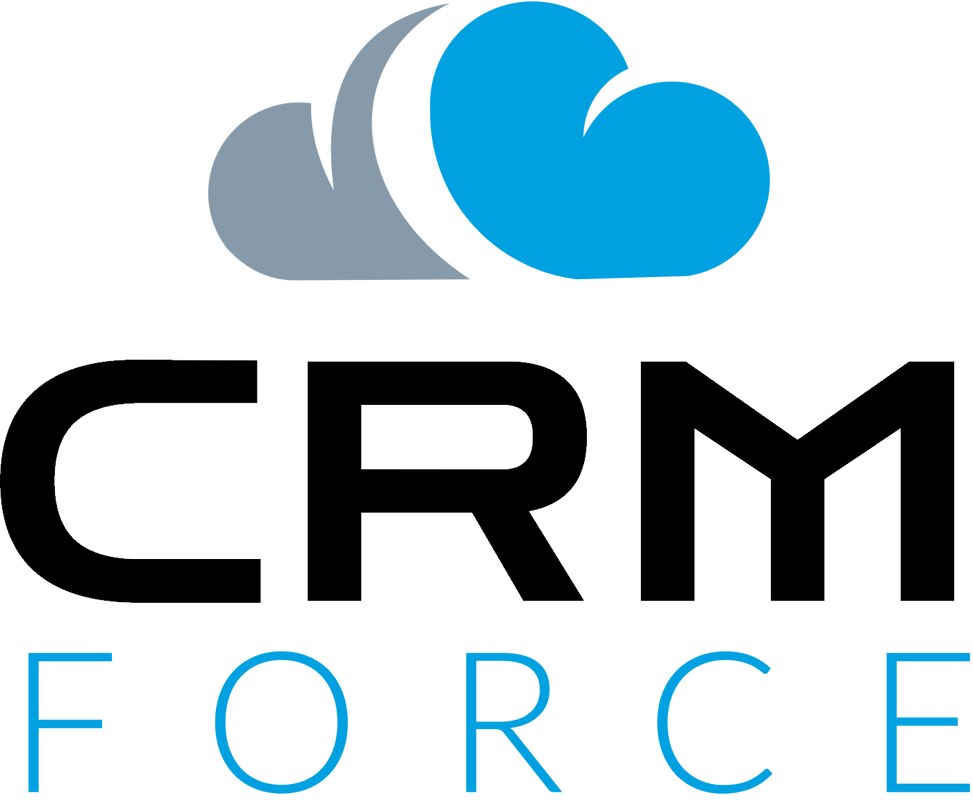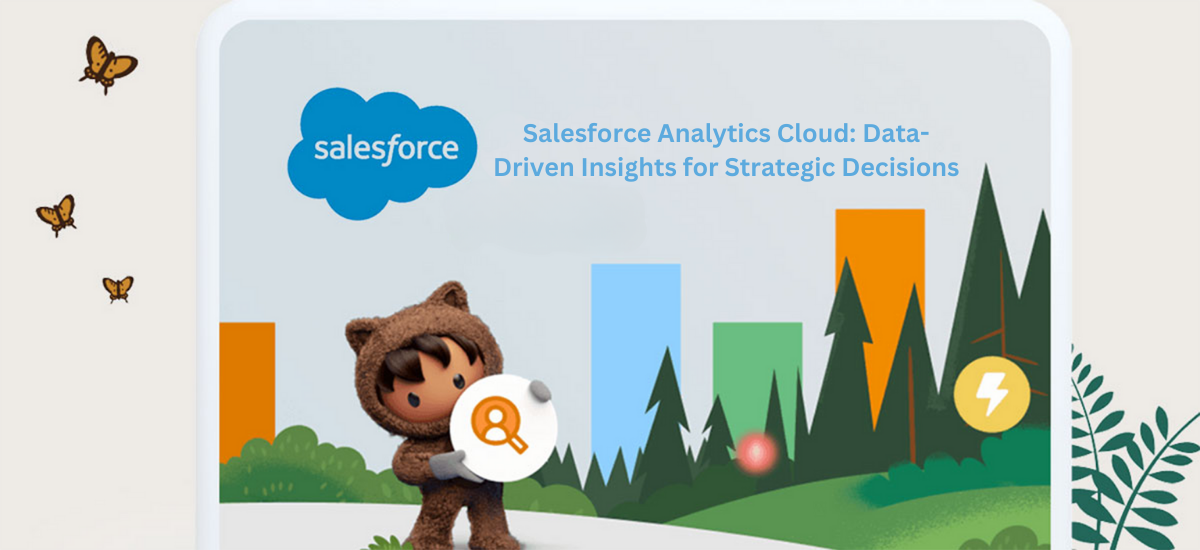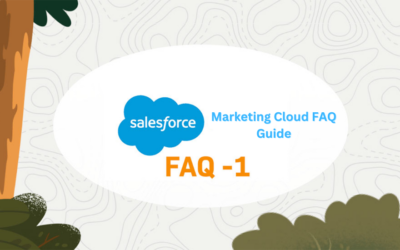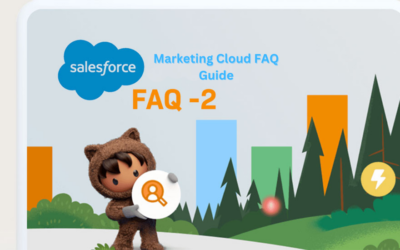In an age where data reigns supreme, the ability to harness its transformative power is no longer an option but a necessity for businesses seeking to thrive and outpace their competitors. The world of business intelligence and data analytics has evolved into a dynamic arena where insights gleaned from data fuel strategic decision-making. At the forefront of this data-driven revolution stands Salesforce Analytics Cloud, an extraordinary platform that empowers organizations with the tools they need to navigate this data-rich landscape effectively. In this comprehensive guide, we embark on an exploratory journey to delve deep into the inner workings of Salesforce Analytics Cloud, uncovering its multifaceted features, revealing the plethora of benefits it offers, and shedding light on its real-world applications. By the time you reach the end of this article, you will not only comprehend the power of data-driven decision-making but also how Salesforce Analytics Cloud can be your compass in navigating the tumultuous seas of modern business.
Data-driven insights have cemented their position as the cornerstone of modern business success. These insights are more than just numbers and graphs; they are the lighthouse that guides decision-makers through turbulent waters, helping them chart a course that is grounded in data, not mere intuition. In this data-centric era, organizations recognize the pivotal role of data-driven insights in not only making well-informed strategic decisions but also in enhancing customer experiences, streamlining operations, driving revenue growth, and securing a competitive edge in the market. It is against this backdrop that Salesforce Analytics Cloud emerges as a beacon, illuminating the path towards harnessing the full potential of data, unlocking invaluable insights, and transforming them into a strategic asset. If you need assistance with Salesforce CRM setup and optimization, companies like CRM Force can provide valuable expertise and support.
1- The Crucial Role of Data-Driven Insights
In today’s business landscape, data-driven insights have emerged as an undeniable asset. They play an instrumental role in: Enhancing decision-making processes by providing a foundation of objective information. Elevating customer experiences through personalization and anticipatory services. Streamlining operations by revealing inefficiencies and opportunities for optimization. Driving revenue growth through improved targeting and product/service development. Ensuring competitiveness by staying ahead of market trends and customer demands.
2- Demystifying Salesforce Analytics Cloud
Salesforce Analytics Cloud, often known as Salesforce Einstein Analytics, represents a cloud-based analytics platform that empowers organizations to explore, visualize, and disseminate data-driven insights. It is a natural extension of the Salesforce ecosystem, providing seamless integration of analytics capabilities with your existing CRM data.
3- Key Features: A Deeper Dive
Salesforce Analytics Cloud is replete with features designed to provide comprehensive analytics solutions for businesses of all sizes. Here’s a more detailed examination of its key features:
Intuitive Data Visualization: Transform raw data into interactive and easily understandable visualizations, encompassing a range of chart types, graphs, and dashboards. This feature allows users to gain deep insights into their data, even without a background in data science or statistics.
AI-Driven Insights: The power of Salesforce Einstein’s artificial intelligence underpins predictive analytics, offering recommendations to guide users in data-driven decision-making. It can detect patterns, anomalies, and correlations that may not be apparent through manual analysis.
Data Integration: Seamlessly connect and consolidate data from diverse sources, including Salesforce CRM, external databases, and cloud-based applications. Data integration is essential for creating a comprehensive, 360-degree view of your business.
Real-Time Data Updates: Enjoy access to real-time data updates, ensuring your insights are always up-to-date, enabling timely and informed actions. This real-time capability is particularly crucial in industries where conditions change rapidly, such as e-commerce and financial services.
Mobile-Friendly: Salesforce Analytics Cloud boasts mobile compatibility, allowing you to access and act upon insights while on the move. This feature is vital in today’s mobile work environment, where professionals need to access critical data from anywhere.
4- Benefits Galore: Why Choose Salesforce Analytics Cloud
Choosing Salesforce Analytics Cloud offers a multitude of benefits, such as:
Increased Productivity: Users can access, analyze, and share data with ease, resulting in improved operational efficiency. With quick and easy access to insights, employees can focus on strategic tasks instead of data manipulation.
Customized Dashboards: Create dashboards tailored to monitor specific key performance indicators, providing insights at a glance. These dashboards can be customized for various roles within your organization, ensuring that each team or department has the information they need to excel.
Enhanced Decision-Making: Real-time data and AI-driven insights empower users to make informed, strategic decisions quickly and confidently. The platform can provide warnings and suggestions, guiding decision-makers towards the best course of action based on the available data.
Enhanced Customer Engagement: By deeply understanding customer behavior and preferences, businesses can create highly personalized and engaging experiences. This not only increases customer loyalty but also drives revenue through upselling and cross-selling opportunities.
Scalability: As businesses grow, so can their analytics capabilities, with Salesforce Analytics Cloud offering the flexibility to expand without extensive infrastructure modifications. You can add more data sources, users, and functionality as your business evolves, ensuring that your analytics solution grows with you.
5- Real-World Applications: Putting Insights into Action
Salesforce Analytics Cloud is not just a theoretical concept; it finds practical applications across diverse industries:
Retail: Analyze sales data to optimize inventory management, target promotions effectively, and offer personalized product recommendations. For instance, retailers can use it to identify which products are selling well and need restocking.
Healthcare: Track patient outcomes, optimize treatment protocols, and improve resource allocation by analyzing medical data. This application can help healthcare providers to predict patient outcomes and allocate resources more efficiently.
Finance: Utilize data analytics to detect fraud, optimize investment strategies, and enhance risk management. For example, financial institutions can use Salesforce Analytics Cloud to monitor transactions for fraudulent activities in real time.
Manufacturing: Predict equipment failures and optimize production processes, ultimately reducing downtime and increasing efficiency. Manufacturers can use predictive maintenance models to prevent machinery breakdowns.
Marketing: Harness the power of data-driven insights to analyze customer behavior and preferences, leading to more effective and personalized marketing campaigns. Marketers can use the platform to create customer segments based on behaviors and preferences, allowing for highly targeted marketing campaigns.
6- Implementation and User Experience
Implementing Salesforce Analytics Cloud is a seamless process, particularly if you’re already familiar with Salesforce CRM. It integrates effortlessly, enabling a quick start. The user experience is highly intuitive, ensuring minimal training requirements for users to navigate the platform.
Implementation typically involves the following steps:
Data Integration: Connect your various data sources, whether they are within Salesforce or external, to consolidate all relevant information into one unified view.
Data Transformation: Utilize the platform’s tools to clean and prepare data for analysis. This step is crucial to ensure data accuracy and reliability.
Dashboard Creation: Design customized dashboards and reports tailored to your business’s specific needs. These visualizations should provide a clear and concise view of your key performance metrics.
User Training: Provide training to users across your organization to ensure they can make the most of the platform. Salesforce often offers training resources and certifications to facilitate this.
Ongoing Maintenance: Regularly update and maintain your data sources and dashboards to keep them relevant and effective.
User experience is a critical aspect of any analytics platform. Salesforce Analytics Cloud is designed with user-friendliness in mind, featuring a user interface that enables non-technical users to explore data, build reports, and create dashboards with ease. It employs a drag-and-drop approach for creating visualizations, making it accessible to a wide range of users.
7- Unleashing the Full Potential: Best Practices
To maximize the benefits of Salesforce Analytics Cloud, consider these best practices:
Set Clear Objectives: Begin with well-defined objectives. What do you want to achieve with your analytics? Identify key performance indicators (KPIs) that align with your business goals.
Regularly Update Data: Ensure your data is up-to-date to provide accurate insights. Automated data integration and scheduled data updates are crucial for this.
User Training: Train your team to utilize the platform effectively and interpret data correctly. Salesforce offers extensive training resources, including Trailhead, which can be a valuable learning tool.
Collaboration: Encourage cross-functional collaboration to leverage insights from different departments. The insights derived from analytics should be shared across your organization to guide decision-making at all levels.
Data Security: Prioritize data security and compliance with regulations like GDPR. Salesforce has robust security measures in place, but it’s essential to configure the platform according to your organization’s security policies.
Monitor Performance: Continuously monitor the performance of your analytics solutions. Analyze dashboard usage, the effectiveness of data visualizations, and the impact on decision-making.
8- Shaping the Future of Data Analytics
The world of data analytics is in a constant state of evolution. Salesforce Analytics Cloud is no exception. Future trends include:
Augmented Analytics: Further integration of AI and machine learning for more intelligent insights. Augmented analytics will help users uncover insights without necessarily needing a deep understanding of data science.
Predictive Analytics: Enhanced predictive capabilities for even more accurate forecasting. Predictive analytics will become more sophisticated, providing organizations with advanced warnings of potential challenges and opportunities.
Data Democratization: Making data accessible to a broader range of users within the organization. The trend toward democratizing data ensures that insights are not limited to a select few, but rather, they’re accessible and usable by employees at all levels.
Enhanced Mobile Features: Continuously improving mobile experiences to support remote work. As the world embraces flexible work arrangements, mobile compatibility will become increasingly important.
Conclusion
In conclusion, in a data-driven world where insights gleaned from data underpin strategic decision-making, the significance of a robust analytics platform cannot be overstated. Salesforce Analytics Cloud stands as an exemplar of such a platform, offering businesses an integrated, user-friendly, and powerful tool to explore, interpret, and apply data-driven insights. Throughout this comprehensive guide, we’ve navigated through the multifaceted realm of data analytics, shedding light on the invaluable role data-driven insights play in shaping businesses’ future. These insights not only enhance decision-making processes but also elevate customer experiences, streamline operations, drive revenue growth, and secure a competitive edge. However, it’s in the application of these insights that the true power of data emerges.
Salesforce Analytics Cloud emerges as the catalyst for transformation, enabling organizations to harness the wealth of data at their disposal. With its intuitive data visualization, AI-driven insights, data integration capabilities, real-time data updates, and mobile-friendly interface, it empowers users to make well-informed, strategic decisions swiftly. The flexibility to create customized dashboards ensures that insights are tailored to specific key performance indicators, providing an at-a-glance view of essential metrics. By deeply understanding customer behavior and preferences, businesses can offer highly personalized and engaging experiences, further solidifying customer relationships. The scalability of the platform ensures that as businesses grow, so can their analytics capabilities, without the need for extensive infrastructure changes. In a rapidly evolving data landscape, Salesforce Analytics Cloud emerges as a strategic asset, guiding businesses toward success through data-driven insights. To learn more about how CRM Force can assist you in recruiting top CRM talent and optimizing your CRM strategies for successful drip campaigns, contact us today. Together, let’s maximize your customer engagement Contact Us today.





